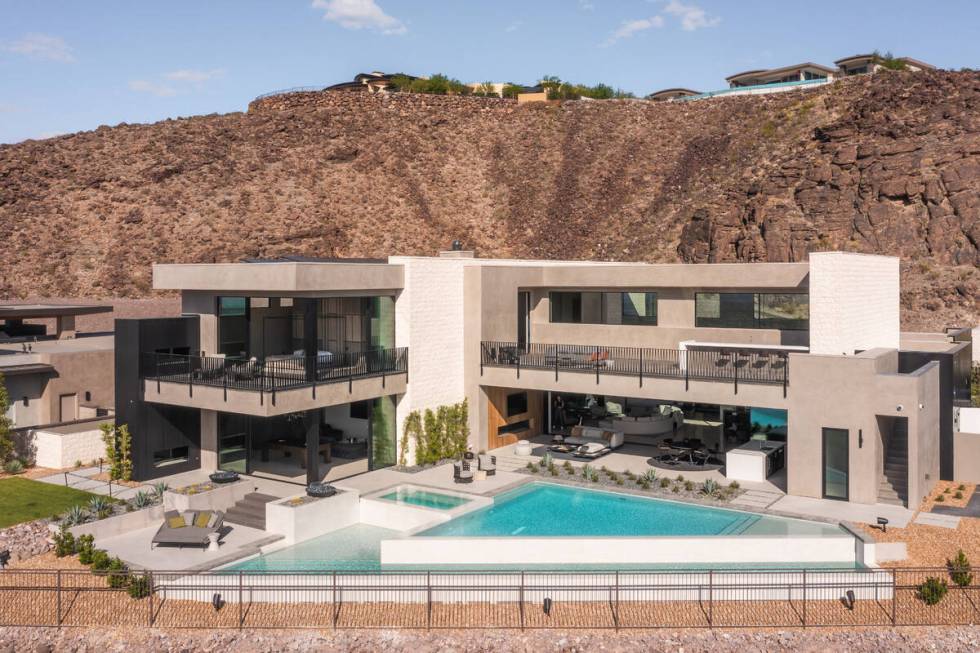Can luxury real estate help fight climate change?

Michael Gardner understands the words “luxury” and “sustainability” sounds a bit of an oxymoron. However, he thinks the luxury real estate market could help lead the charge against climate change.
Gardner, the principal and founder of Studio G Architecture and Luxus Design Build, designed and built the 2023 New American Home at Ascaya. The home, a two-story property in Henderson with 7,575 square feet that features four bedrooms, six bathrooms plus an outdoor kitchen, also has National Green Building Standard “Emerald” certification, Energy Star Certification, Indoor airPLUS Certification, DOE’s Zero Energy Ready Home Program Certification and net-zero status. The home is currently on the market for $15 million.
Gardner, who lives in Las Vegas, spoke earlier this week at the Inman Connect Conference, on the future of luxury sustainability, making the argument that these two buzzwords don’t necessarily have to be contrarian.
“So to make it the non-oxymoron, you have to consider them both lifestyles,” he said. “So a luxurious lifestyle and a sustainable lifestyle are actually pretty synonymous with each other, believe it or not. I think the initial kind of take on both is snooty. But with them both being a lifestyle, it’s all about selecting things that compliment your values.”
The argument is that sustainability simply needs to move to the forefront of people’s lives in general as climate change becomes an even bigger threat to humanity, Gardner said.
“So the conversation about that barrier, is we have to make it mainstream,” he said, noting higher-income people can choose to be more sustainable, and they need to champion it with their wallets so it can reach all aspects of the market. “Whether we like it or not, everything starts in the luxury space and then becomes more mass appeal.”
Protecting homes from climate change
Climate change has leaked its way into every conceivable industry and sector including real estate.
According to a recent report from Redfin, an online real estate brokerage, more than half of U.S. homeowners have spent money on their properties now to protect from climate change, which includes everything from rising temperatures to extreme cold bouts in areas not normally known for cooler temperatures, as well as flooding, tornadoes, poor air quality, earthquakes and wildfires.
These purchases can include everything from upgrading air filters and home damage insurance to fortified windows and foundational improvements. According to another Redfin report, more than half of U.S. homeowners are also hesitant to move to areas that are more prone to extreme weather which could be related to climate change, including areas hit by flooding, tornadoes and wildfires.
Daryl Fairweather, the chief economist for Redfin, said people are still choosing where to live with their wallets as their first consideration, but are now finding it tough to ignore the financial impact of climate change and now the real estate market is changing accordingly.
“We’ve done some surveys and people do consider climate in terms of where they want to live,” he said. “But their number one consideration is affordability. But climate can impact affordability because if say insurance becomes more expensive, or it becomes more expensive to repair homes to make them more resilient to climate change or taxes go up because at a municipality level there needs to be more tax funds put towards mitigation, then that can all end up in the affordability piece too.”
Fairweather said this can even impact more deep seeded migratory trends if people are finding climate change is becoming an ongoing issue that is only getting worse each year.
“You have a lot of people who maybe thought they were going to stay somewhere long term, and then the climate changes, they might now have a reason to move that they didn’t have before.”
When it comes to making homes more sustainable and environmentally friendly, Gardner said he’s game to do his part as a builder. He noted when planning a property he also uses the local landscape to help combat things like heat exposure and water retention, which means building not for the builder’s sake, but for the environment.
“So I take the approach of good design. Citing the home correctly, making sure that we take into account the terrain, the topography, the environment and that’s all free,” he added, noting he as an architect can set sustainability into the foundation of a home from the get-go. “Whether it’s luxury or affordable housing, what I’ve found works best is if we just don’t give our clients a choice, we just do it.”
Contact Patrick Blennerhassett at pblennerhassett@reviewjournal.com.